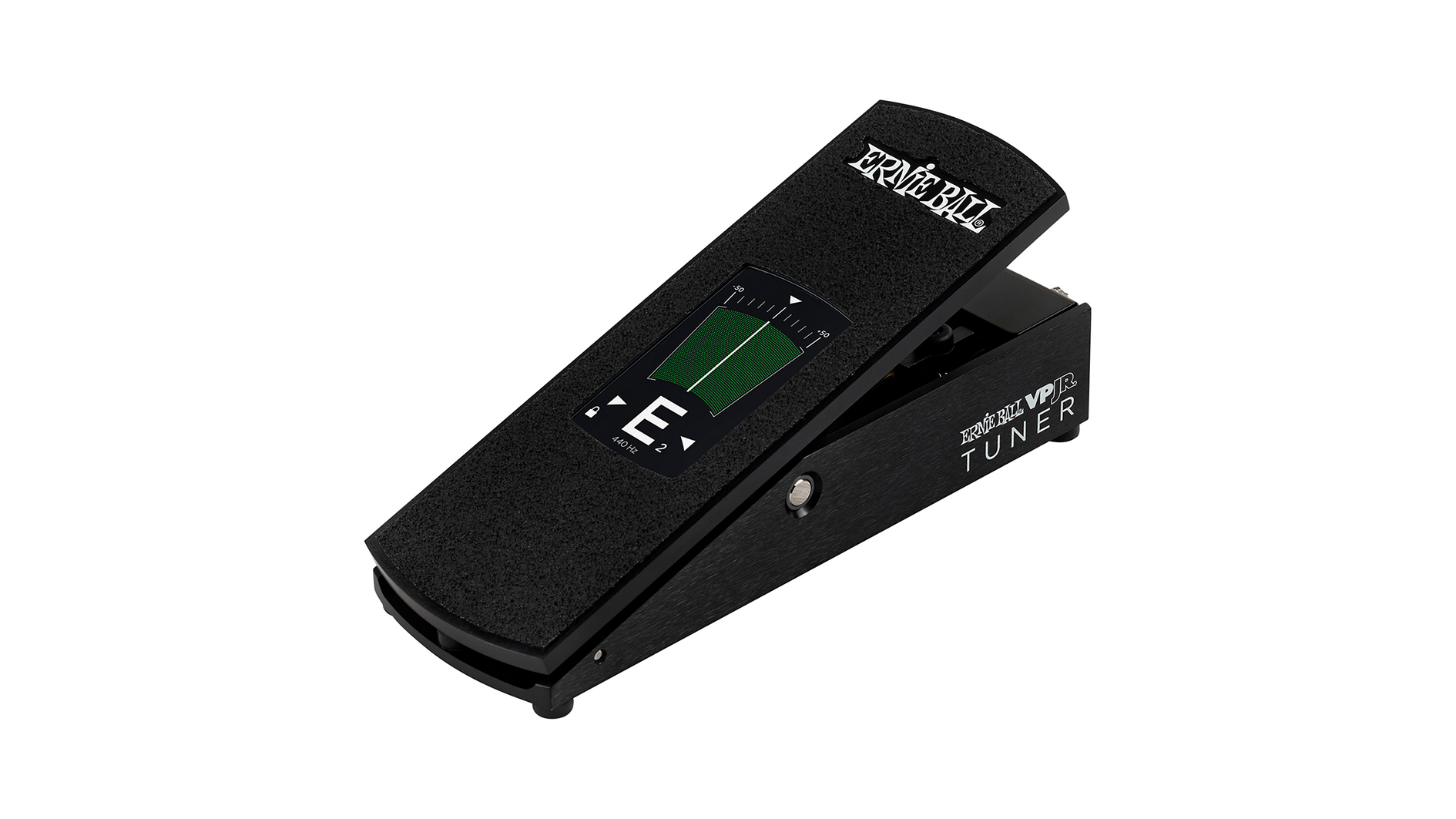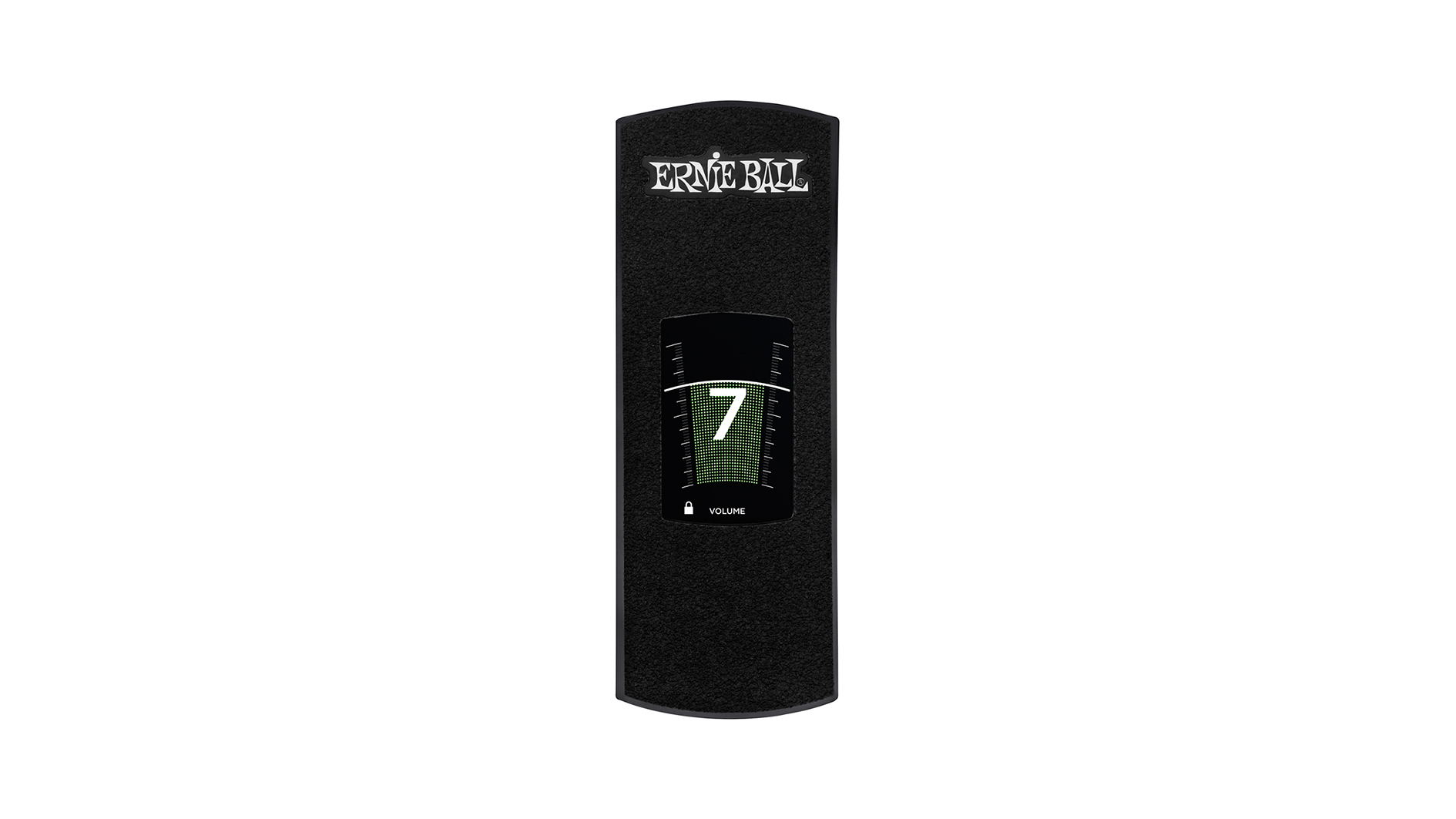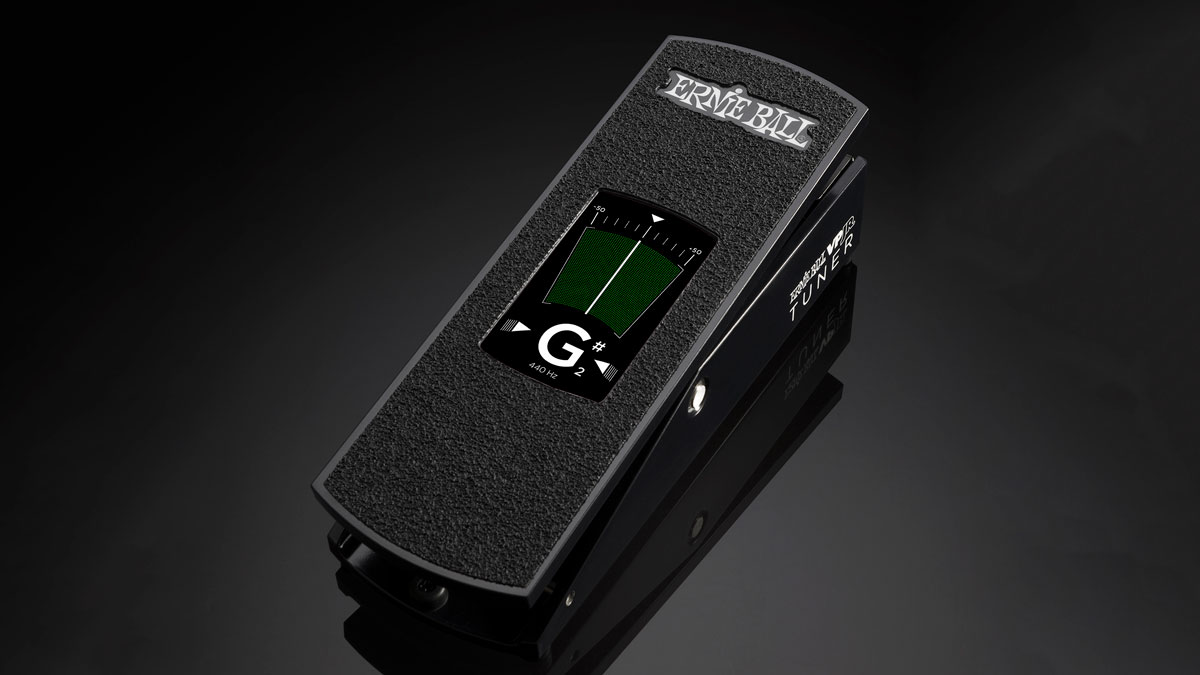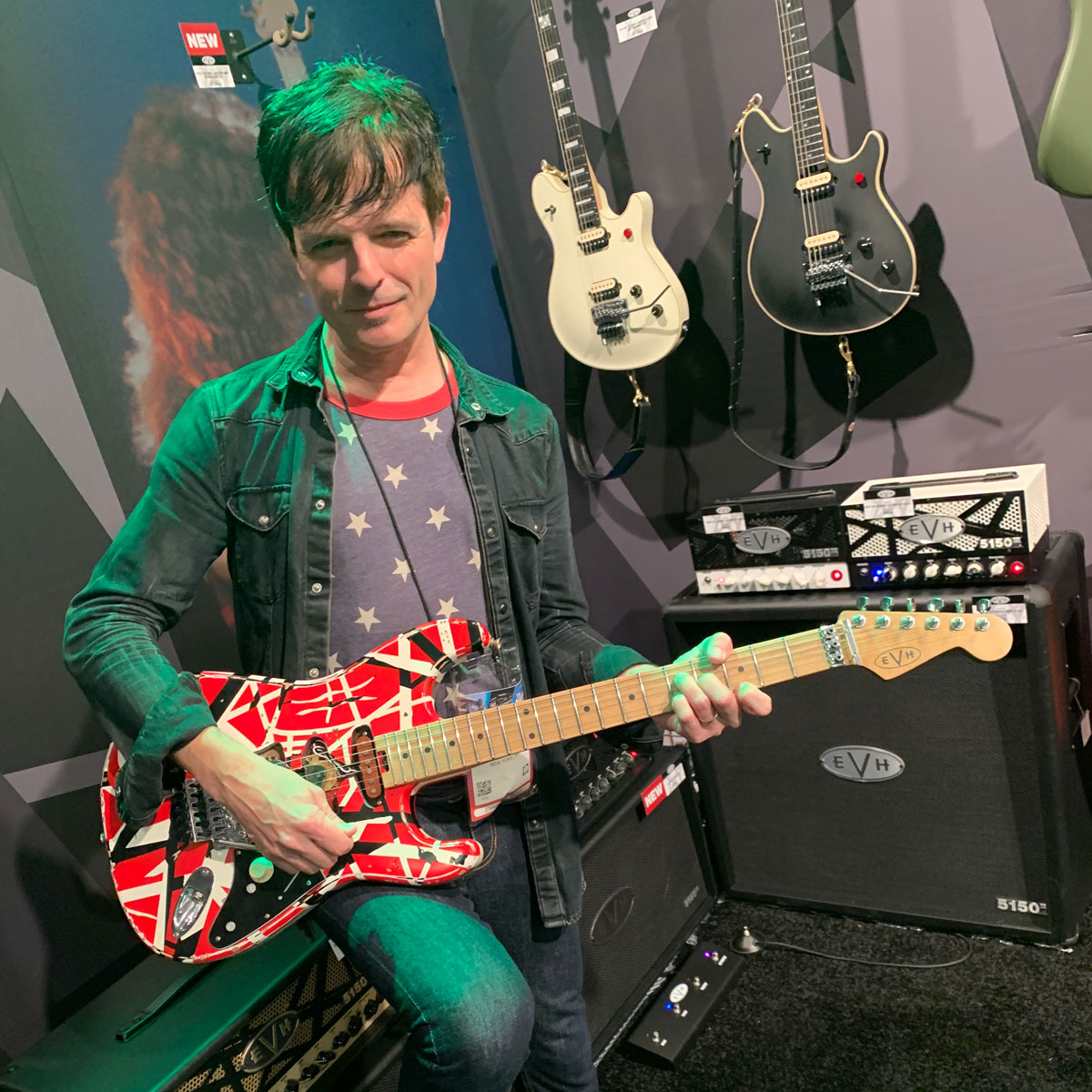Guitar World Verdict
A clever, space-saving pedalboard idea brilliantly executed.
Pros
- +
Modern user interface featuring a touchscreen display.
- +
Built-in effects loop.
- +
Affordable given the combined functionality.
Cons
- -
No polyphonic tuning.
You can trust Guitar World
What can you say about a volume pedal? “It smoothly sweeps from no signal to full volume, and it’s great for volume swells.” Review. Over. I jest, but seriously, just when thought you couldn’t improve upon a volume pedal, think again. Ernie Ball has been making some of the most durable, best-selling volume pedals longer than most guitarists reading this review have been alive.
They recently released the Ernie Ball VPJR Tuner, a two-in-one pedal that combines a numerical graphic volume display and an onboard digital chromatic guitar tuner on a crystal-clear display screen integrated on the pedal’s treadle.

This rugged piece of machinery uses aircraft-grade aluminum for its compact chassis. It features a high-quality discrete buffer circuit, ¼-inch input/output and FX send/return jacks, a non-slip, super-grip surface on its treadle and a practically unbreakable PVC-coated braided Kevlar cord that retains consistent tension throughout the sweep of the pedal.
The heart of the VPJR Tuner is the enhanced-definition touchscreen display located on the treadle that lets you choose between three modes (volume and tuner, volume only, tuner only). Most players will likely use the combination of both, because its design activates the tuner at no signal or minimal volume (heel down) and switches to a graphic volume readout once a signal is detected.
The tuner can also be calibrated to a wide variety of reference pitches, and just as handy, the treadle can be routed as either a master volume or gain control.
There's no guesswork using the VPJR Tuner. I mean, it’s still a volume pedal! In combo mode, heel down cuts out the signal and displays the tuner. I’ve seen a lot of digital tuners, but this incredibly accurate one on the VPJR Tuner is a standout.
The large-screen readout, incremental needle movement and having the entire display field light up from blue (sharp or flat) to green (in tune) ensures precise tuning. What’s really cool is gradually sweeping toward toe down triggers the level indicator that goes from 1-10, and offers obsessive guitarists a numerical point of view on where they can determine clean, rhythm and lead ranges.
The treadle is so precise that once you get used to its throw, slightly tapping it easily accomplishes this. Most players use their ears and feel when it comes to using volume pedals, but the VPJR Tuner is like having a digital speedometer to know how fast you’re going. Having an FX loop on the VPJR Tuner makes it a must-have, but I’m certain you already get my gist that this pedal is indispensable.
Specs

- STREET PRICE: $199.99
- MANUFACTURER: Ernie Ball
- PEDAL TYPE: Tuner
- TUNER TYPE: Chromatic
- REFERENCE PITCH: A440
- ACCURACY: 0.1 cent (chromatic)
- INPUTS: 2 x 1/4" (instrument, effects return)
- OUTPUTS: 2 x 1/4" (main out, effects send)
- POWER SUPPLY: 9V-18V DC power supply
- POWER USAGE: 150mA (minimum)
- DIMENSIONS: 2.5 x 10 x 3.5" (H x D x W)
- WEIGHT: 2.6 lbs
- MANUFACTURER PART NUMBER: P06203
Paul Riario has been the tech/gear editor and online video presence for Guitar World for over 25 years. Paul is one of the few gear editors who has actually played and owned nearly all the original gear that most guitarists wax poetically about, and has survived this long by knowing every useless musical tidbit of classic rock, new wave, hair metal, grunge, and alternative genres. When Paul is not riding his road bike at any given moment, he remains a working musician, playing in two bands called SuperTrans Am and Radio Nashville.
“The original Jordan Boss Tone was probably used by four out of five garage bands in the late ’60s”: Unpacking the gnarly magic of the Jordan Boss Tone – an actual guitar plug-in that delivers Dan Auerbach-approved fuzz
“This is a powerhouse of a stompbox that manages to keep things simple while offering endless inspiration”: Strymon EC-1 Single Head dTape Echo pedal review












